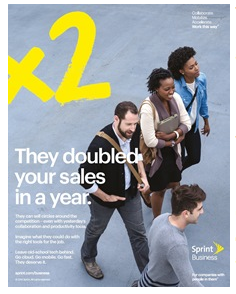How many times has traditional media been pronounced dead in the past decade? We’ve lost count, right? While there is no denying that TV, newspapers and radio have lost a ton of ground to digital, the fact of the matter is traditional media still matters. Even to digital marketers.
In fact, some marketers are finding that traditional media is a becoming a great platform for engaging buyers. Consider brands like Doritos, Coca-Cola and others that are asking for consumers to submit short video clips via their company websites and social media channels. Those clips are curated into commercials that are airing during major events like the SuperBowl and the Academy Awards. In fact, 20% of ads in Super Bowl XLVII in 2013 included some form of crowdsourcing from major brands like Coca-Cola, Audi, Doritos, Pizza Hut and others. The incentive to participate in these contests is big for consumers willing to give up names and multiple forms of contact information just to take part.
Could digital marketers completely do that without the “traditional media” of television? Absolutely not. While some have been quick to pronounce the death of traditional media, more savvy marketers have instead asked, “how can we use this media better?”
The same goes for native advertising and sponsored content that appears in newspapers and newspaper websites from New York Times to Washington Post to the LA Times.
Traditional Media Pros:
- Traditional media is a trusted source. By including trusted media outlets in your media mix, you can help elevate your brand.
- Traditional audiences come pre-segmented. Want to reach your B2B audience? Your local paper’s business section is where they’re likely reading.
- It’s more affordable than ever. While the demise of traditional media has been greatly exaggerated, the fact is that there are ad revenue issues and deals to be made.
- It is always there in some form. If billboard ads along a certain route have drawn the attention of your target market, chances are that billboard is still there and will still reach a lot of the same people.
Traditional Media Cons:
- The numbers aren’t what they used to be. Daily newspaper readership continues to fall, according to The Pew Research Center. Around 6.5% of households nationwide have cut the cable cord.
- There are problems with reach. Your media buyer may tell you that on average 2.5 people read every newspaper, but how likely is that?
- As more marketers shift to roles with digital companies — software, agencies, online service providers — fewer customers are coming from traditional media ad buys.
- Forms of traditional media has a hard time penetrating some demographics. When is the last time you heard a millennial talk about that awesome newspaper ad?
What Marketers are Saying:
“Most prognosticators say that by 2020 most printed media will be gone. I think anyone who makes those types of comments doesn’t understand history. Just type into Google “The Death of TV” and you’ll see hundreds of articles predicting the end of television.”
— Joe Pulizzi, 7 Reasons to Consider Print For Your ‘Non-Traditional’ Content Strategy
“Media consumption has changed. Traditional methods of getting in front of the consumer are becoming irrelevant. If you think acquisition is hard, customer retention has become much more difficult.”
— Hesse Jones, How the New Consumer Will Force Businesses to Change
“From cutting cable, to new streaming players beyond Netflix, to new content creators beyond traditional studios, the entertainment space is in full upheaval.”
— George Deeb, 20 Digital Trends for 2015
“Take one example: The banner campaign. I kind of gave up on that a few years ago to tell you the truth. In B2B, it’s like buying eyeballs. It just wasn’t successful, but now you can actually use it reverse IP and actually target your message to very specific companies.”
— Nick Panayi, Is Paid Advertising worth It? B2B Content Marketers Share Their Insights
Traditional Media Examples:
Both B2B and B2C marketers continue to utilize traditional media to some effect to build awareness and generate leads. Here are a few examples:
Pizza Hut solicited submissions of video clips of customers using “Hut, Hut!” football calls to incorporate into their 2013 Super Bowl commercial.
This print ad is part of a multimillion dollar integrated B2B campaign. The ads were distributed in Bloomberg BusinessWeek, Forbes, Fortune, Inc., The New York Times and The Wall Street Journal. Sprint also ran digital and TV ads during the campaign.

Sponsored content from Shell appears in the pages of Washington Post’s print version below. The content, supplied by the advertiser, is labeled as sponsored and receives a color treatment that helps to set it aside from editorial content.

Best Practices
Traditional media best practices have been around as long as traditional media itself. However, as traditional media outlets go through their own transformations incorporating digital and social media, here are some topics to consider:
- Ask for demographics. It’s not enough anymore to live by a media outlet’s rate sheet definition of their audience. Just as marketers dig into audience demographics, so do publishers. The information on their audience is available, so don’t be afraid to as for it.
- Be on-brand. Advertising and content placement in traditional media can reach a somewhat more conservative audience than its digital counterparts. Consider the right messaging for the right audience and stick to it.
- Be integrated. When you’re running print, TV, radio or even billboard campaigns it’s also a good idea integrate those campaigns into your editorial calendar for your owned property and social channels.
- Track on your own, too. Any link you give a newspaper, radio or TV station for a digital ad is also a link you can customize and track on your own. Use a service like Google URL Builder to add custom URL tags to any links you use.
Have you been successful using traditional media in your marketing mix? What are your tips and tricks?
For more content marketing best practices, see our full list of content marketing tactics with links to in-depth articles on each tactic just like this one.
Top image: Shutterstock



